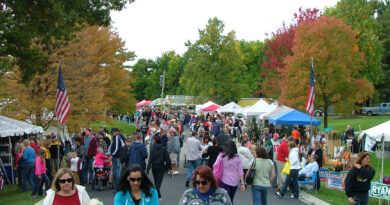History of Harlem New York
Harlem’s history begins in the early 17th century when it was first settled by Dutch colonists. Originally called “Nieuw Haarlem,” the neighborhood was named after the city of Haarlem in the Netherlands. In 1658, Dutch Governor Peter Stuyvesant established the village as a farming settlement on the northern tip of Manhattan Island. The early inhabitants were mainly farmers, tradesmen, and artisans who cultivated the fertile land and supplied food to the growing population of New Amsterdam, now known as New York City.
During its early years, Nieuw Haarlem remained a quiet, rural outpost, far removed from the bustling activity of lower Manhattan. The settlement’s isolation allowed it to develop independently, fostering a close-knit community that thrived on agriculture and trade. Despite its remote location, the village was strategically important for protecting New Amsterdam from potential Native American attacks and rival European powers.
Harlem During the Colonial and Post-Revolutionary Periods
Throughout the 18th century, Harlem continued to grow as an agricultural community. Wealthy landowners built large estates, and the area became known for its expansive farms and country retreats. As New York City expanded, Harlem’s proximity to the city made it an attractive location for those seeking to escape the congestion and noise of the urban center.
After the American Revolution, Harlem’s development was influenced by several key events. The construction of the Harlem Road, a vital connection between Harlem and downtown Manhattan, facilitated trade and movement of goods. Additionally, Harlem became a site of significant military activity during the Revolution, with key battles fought in the area.
In the post-Revolutionary period, Harlem began to evolve from a rural community into a more suburban neighborhood. Wealthy New Yorkers continued to build summer homes in Harlem, and the area became known for its picturesque landscapes and serene environment.
19th Century Harlem: Urbanization and Real Estate Boom
The 19th century was a transformative period for Harlem as it gradually transitioned from a rural outpost to a bustling urban neighborhood. The development of the New York and Harlem Railroad in 1831 was a catalyst for change, making Harlem more accessible and spurring residential development. As transportation improved, Harlem attracted middle-class families looking to escape the crowded conditions of downtown Manhattan.
The period following the Civil War saw Harlem undergo significant growth. The construction of elevated rail lines in the 1870s and 1880s further connected Harlem to the rest of Manhattan, accelerating its transformation into a commuter suburb. Real estate speculators, anticipating continued urbanization, invested heavily in Harlem, constructing row houses, apartment buildings, and brownstones.
However, the rapid development led to overbuilding, and by the 1890s, Harlem experienced a real estate collapse due to economic downturns like the Panic of 1893. Many properties were left vacant, and prices plummeted, setting the stage for a major demographic shift in the neighborhood.
The Great Migration and the Birth of African American Harlem
The early 20th century marked a turning point in Harlem’s history with the arrival of a significant African American population. This demographic shift was driven by the Great Migration, during which millions of African Americans moved from the rural South to northern cities in search of better economic opportunities and to escape the oppressive Jim Crow laws. Harlem became one of the primary destinations for these migrants, drawn by its affordable housing and the promise of a vibrant community.
As African Americans settled in Harlem, the neighborhood began to transform into a cultural and intellectual hub. By the 1920s, Harlem had become the epicenter of the Harlem Renaissance, a flourishing of African American arts, literature, and music. The Harlem Renaissance was characterized by a rich cultural output, with figures like Langston Hughes, Zora Neale Hurston, and Duke Ellington contributing to a new and dynamic cultural identity.
The Harlem Renaissance: A Cultural Explosion
The Harlem Renaissance, spanning the 1920s and 1930s, was one of the most significant cultural movements in American history. Harlem became a center of artistic expression, attracting African American writers, musicians, poets, and intellectuals from across the country. The movement sought to redefine African American culture and identity, challenging the pervasive racial stereotypes and asserting the intellectual and artistic contributions of Black Americans.
Literature played a central role in the Harlem Renaissance, with authors like Langston Hughes, Claude McKay, and Jean Toomer writing works that explored the complexities of Black life in America. Their writings were often infused with themes of racial pride, resistance, and a desire for social justice.
Music was another key component of the Harlem Renaissance, with jazz becoming the soundtrack of the era. Harlem’s nightclubs, such as the Cotton Club and the Savoy Ballroom, became famous for their jazz performances, featuring legendary artists like Duke Ellington, Louis Armstrong, and Bessie Smith. Jazz not only provided entertainment but also served as a form of cultural expression that transcended racial boundaries.
Visual arts and theater also flourished during the Harlem Renaissance, with artists like Aaron Douglas and Jacob Lawrence creating works that depicted African American life and history. The Harlem Renaissance was not just a local phenomenon; it had a profound impact on the entire nation, influencing American culture and shaping the Civil Rights Movement that would follow.
Mid-20th Century: Challenges and Resilience
The mid-20th century brought both challenges and resilience to Harlem. The Great Depression of the 1930s hit the neighborhood hard, exacerbating economic inequalities and leading to widespread poverty. Despite these hardships, Harlem remained a vibrant community, with its cultural and political institutions continuing to play a vital role in the lives of its residents.
During the 1940s and 1950s, Harlem became a center of political activism, particularly in the fight for civil rights. Organizations like the NAACP and the Urban League were active in the neighborhood, advocating for racial equality and economic justice. The neighborhood also became a base for prominent African American leaders like Malcolm X, whose advocacy for Black empowerment and social justice resonated with many Harlem residents.
The post-World War II era saw significant changes in Harlem’s demographics and economy. The neighborhood experienced increased migration from Puerto Rico and other parts of the Caribbean, adding to its cultural diversity. However, Harlem also faced urban decay, with deteriorating housing conditions, crime, and unemployment becoming serious issues.
The Decline and Revitalization of Harlem
By the 1960s and 1970s, Harlem had entered a period of decline. The neighborhood, once a symbol of Black cultural achievement, was now plagued by poverty, crime, and drug addiction. Urban renewal projects, such as the construction of public housing, often disrupted communities and exacerbated the problems.
Despite these challenges, Harlem’s residents demonstrated resilience and determination. Grassroots organizations and community leaders worked tirelessly to address the neighborhood’s issues, advocating for better housing, education, and healthcare. Harlem’s churches, long a pillar of the community, played a crucial role in providing social services and support.
The late 20th and early 21st centuries saw efforts to revitalize Harlem. Investment in housing, business development, and cultural institutions began to reverse the neighborhood’s decline. Gentrification, while controversial, brought new economic opportunities to Harlem, though it also raised concerns about the displacement of long-time residents.
Harlem Today: A Neighborhood in Transition
Today, Harlem is a neighborhood in transition, balancing its rich cultural heritage with the challenges of modern urban life. The area has experienced significant gentrification, with rising property values and an influx of new residents altering the neighborhood’s character. However, Harlem remains a vital center of African American culture, with its history celebrated through institutions like the Schomburg Center for Research in Black Culture and the Apollo Theater.
Harlem’s streets, once home to jazz legends and literary giants, continue to be a source of inspiration for artists and musicians. The neighborhood’s cultural festivals, such as the Harlem Week and the Harlem Arts Festival, attract visitors from around the world, showcasing the enduring legacy of the Harlem Renaissance.
Despite the changes, Harlem retains its unique identity, shaped by its history, culture, and community. The neighborhood’s future will undoubtedly be influenced by its past, as Harlem continues to evolve while honoring the traditions that have made it a symbol of African American achievement and resilience.
Conclusion
Harlem’s history is a testament to the resilience and creativity of its residents. From its beginnings as a Dutch farming village to its emergence as the cultural heart of Black America, Harlem has played a crucial role in shaping the social, cultural, and political landscape of the United States. As the neighborhood continues to evolve, its legacy as a center of African American culture and history remains a vital part of New York City’s identity.
Discover more from City Towner
Subscribe to get the latest posts sent to your email.




